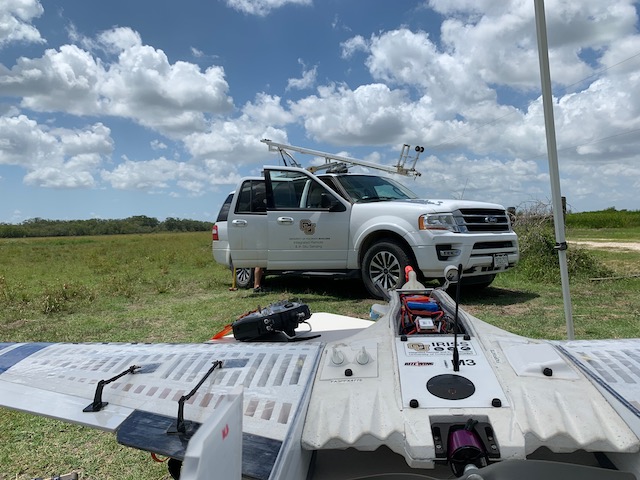Initial perspectives on the lower atmosphere during the TRACER-IOP from Uncrewed Aircraft Systems
Authors
Gijs de Boer — Brookhaven National Laboratory
Petra Klein — University of Oklahoma - School of Meteorology
Brian Argrow — University of Colorado
Steven Daniel Borenstein — University of Colorado
Antonio Ricardo Segales Espinosa — University of Oklahoma
Jonathan Hamilton — University of Colorado Boulder
Troy Thornberry — Cooperative Institute for Research in Environmental Sciences
Elizabeth Asher — NOAA ESRL CSD / University of Colorado CIRES
Elizabeth PillarLittle — University of Oklahoma *
Michael Rhodes — University of Colorado
Michelle Rose Spencer — University of Oklahoma
Francesca Lappin — University of Oklahoma
Kelsey Britt — University of Oklahoma
Bryony Louise Puxley — University of Oklahoma
Madison Ritsch — University of Colorado Boulder
Justin Buchli — Iowa State University
Ceu Gomez-Faulk — University of Colorado Boulder
Radiance Calmer — University of Colorado Boulder
Isaac Joseph Medina — University of Oklahoma
Leia Marie Otterstatter — University of Oklahoma
Angelina Miller — University of Colorado Boulder
Category
ARM field campaigns – Results from recent ARM field campaigns
Description
Convective clouds govern climate-critical processes in the Earth’s atmosphere. These clouds and the environments they form in redistribute energy in the atmosphere, and their presence changes the amount of radiation reaching the planet’s surface and subsequent forcing of the atmospheric boundary layer. Representation of convective clouds in climate models can influence the extent to which global climate reacts to forcing from increasing concentrations of atmospheric gases. Additionally, accurate representation of these clouds in weather models is important for the prediction of precipitation intensity in vulnerable areas. The extent to which these clouds are accurately represented in models and how this representation governs the response of simulated climate to anthropogenic activities has yet to be determined.
To better understand convective clouds, the US DOE supports the “Tracking Aerosol Convection Interactions Experiment” (TRACER) project, which collects atmospheric and surface characteristic observations in Greater Houston, including detailed intensive observing period (IOP) observations during summer 2022. During the IOP, the University of Colorado (CU) and University of Oklahoma (OU) deployed two uncrewed aircraft systems (UAS) - the CU RAAVEN and the OU CopterSonde2. Operating at three locations between Houston and the Gulf of Mexico, these UAS collected detailed information on lower atmospheric parameters, flying between the surface and 2,000 feet AGL. Together with other TRACER observations, UAS-based measurements seek to answer five key research questions: 1) How does the pre-convective boundary layer control formation and intensity of convective clouds?; 2) How do environmental conditions influence the evolution of convective features, including eddies and clouds?; 3) Does the city of Houston help drive local circulations supporting or enhancing convective clouds?; 4) How do gulf-breeze properties influence formation of convective clouds?; and 5) How do precipitation, land-sea breeze circulations, and the urban heat island impact aerosol concentrations and their impacts on clouds and precipitation?
We provide initial perspectives from these UAS, including statistics on completed flights and a broad overview of the environments observed. Additionally, we provide initial looks at some interesting conditions sampled that may offer potential case studies for the greater TRACER community.
Lead PI
Gijs de Boer — Brookhaven National Laboratory


